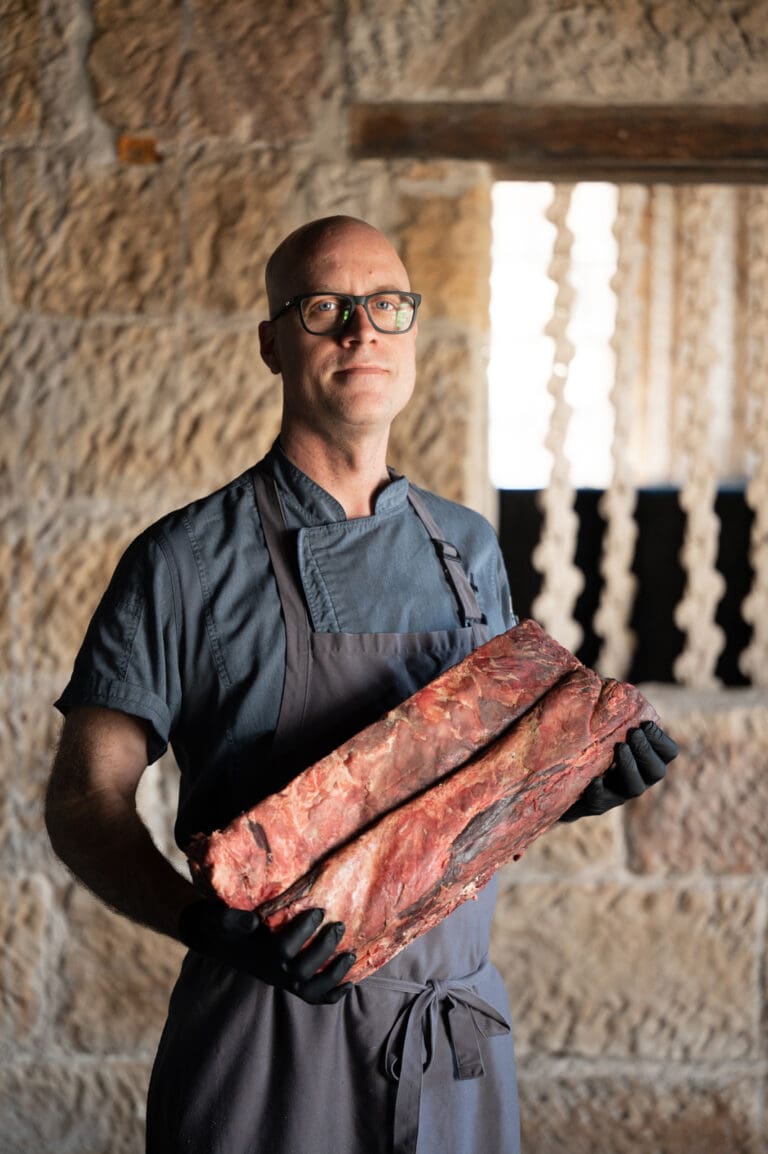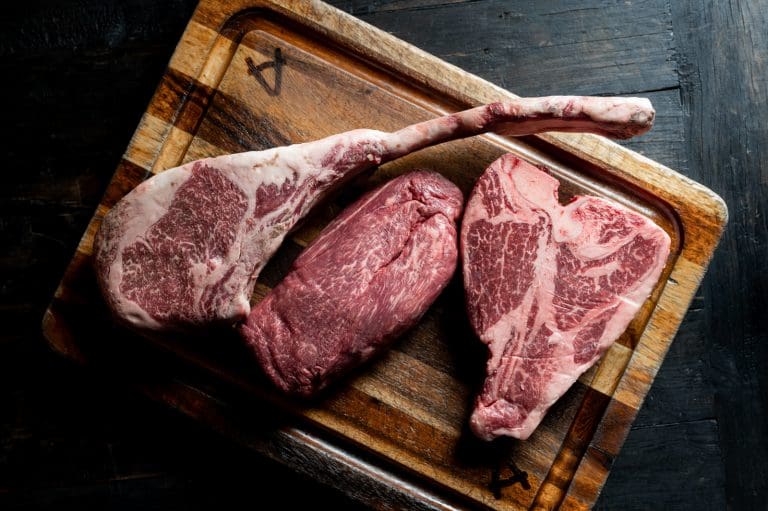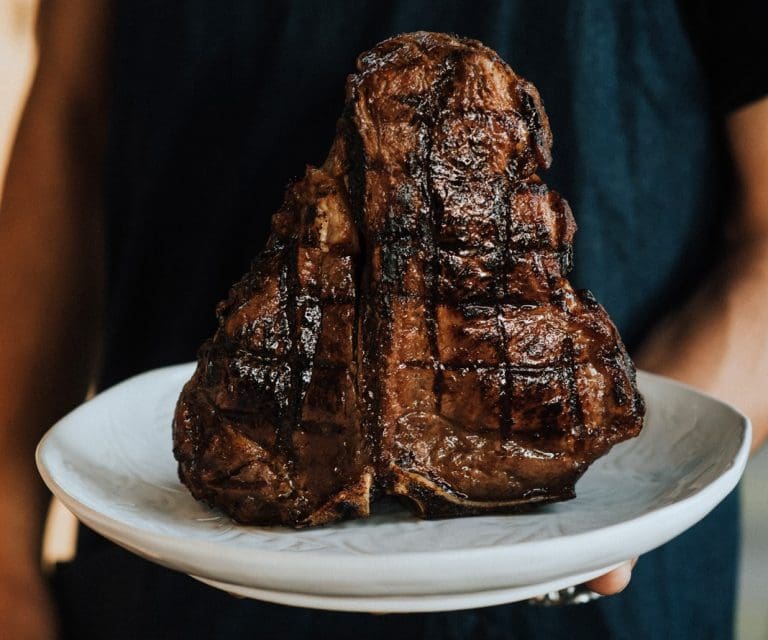
Curious about the nuanced flavours of dry aged beef? In this blog, we’ll explore the meticulous process of dry ageing, where prime cuts of beef are subjected to controlled, time-intensive conditions to intensify taste and tenderness. Learn the science behind this technique, explore how enzymes work their magic, and discover the art of selecting the perfect dry-aged steak.
How Do You Dry Age Beef?
Dry ageing beef is a controlled process that enhances its flavour and tenderness. First, high-quality cuts are selected (usually primal cuts like ribeye or sirloin) with a good fat cap for protection. Then, the beef is placed in a sanitised, temperature-controlled environment, typically between 1°C to 3°C with humidity around 85% to 90%.
During the ageing process, enzymes naturally present in the meat break down connective tissues, resulting in increased tenderness. Meanwhile, moisture evaporates from the meat, concentrating flavours and creating that coveted umami taste. The fat also changes, becoming buttery and further enhancing the depth of the beef’s flavour.
The duration of dry ageing varies; it can range from weeks to months. Throughout this time, the meat develops a dry, protective crust, which is trimmed off before the beef is portioned into steaks. This meticulous process yields a rich, nutty, and deeply flavoured steak that is highly prized by steak enthusiasts.
WHY IS DRY AGED BEEF SO SPECIAL?
Dry aged beef stands out due to its exceptional taste, texture, and depth of flavour. During the ageing process, the beef’s taste intensifies, creating a more robust, concentrated flavour profile characterised by nuttiness, richness, and a distinct umami quality. The breakdown of connective tissues by natural enzymes also enhances tenderness, offering a melt-in-your-mouth texture that is highly sought after.
The development of a protective crust during ageing allows for a natural preservation process, enabling the meat to develop complexities without spoilage. This method also leads to a reduction in moisture, yielding a higher meat concentration, elevating the overall taste experience.

HOW DO I STORE DRY AGED BEEF?
Dry aged beef should be stored correctly to maintain its quality. It should be kept in the refrigerator (preferably in the original vacuum-sealed packaging or airtight wrapping to prevent exposure to air) with the temperature set to 0°C-2°C to slow bacterial growth without freezing the meat. If the beef isn’t vacuum-sealed, it should be placed on a rack over a plate to catch any potential drips, allowing air circulation to prevent moisture buildup.
Dry-aged beef should be eaten within a few days for the best taste and quality, but can be freezed for longer-term storage (as long as it’s well-wrapped to prevent freezer burn). Frozen dry-aged beef should be thawed in the refrigerator prior to use.
What Are The Benefits of Dry Ageing Beef?
If you’re a steak enthusiast, dry aging beef offers unparalleled tenderness, and produces a richer, more complex taste profile. Learn more about its benefits here.
Come and Enjoy Dry Aged Beef at 6HEAD Today
Indulge in the exquisite flavours of our dry age beef at 6HEAD today! Savour the richness, tenderness, and unmatched taste of our premium steaks. Book your table now for an unforgettable dining experience, or check out our enticing all day menu to explore our offerings before your visit.



